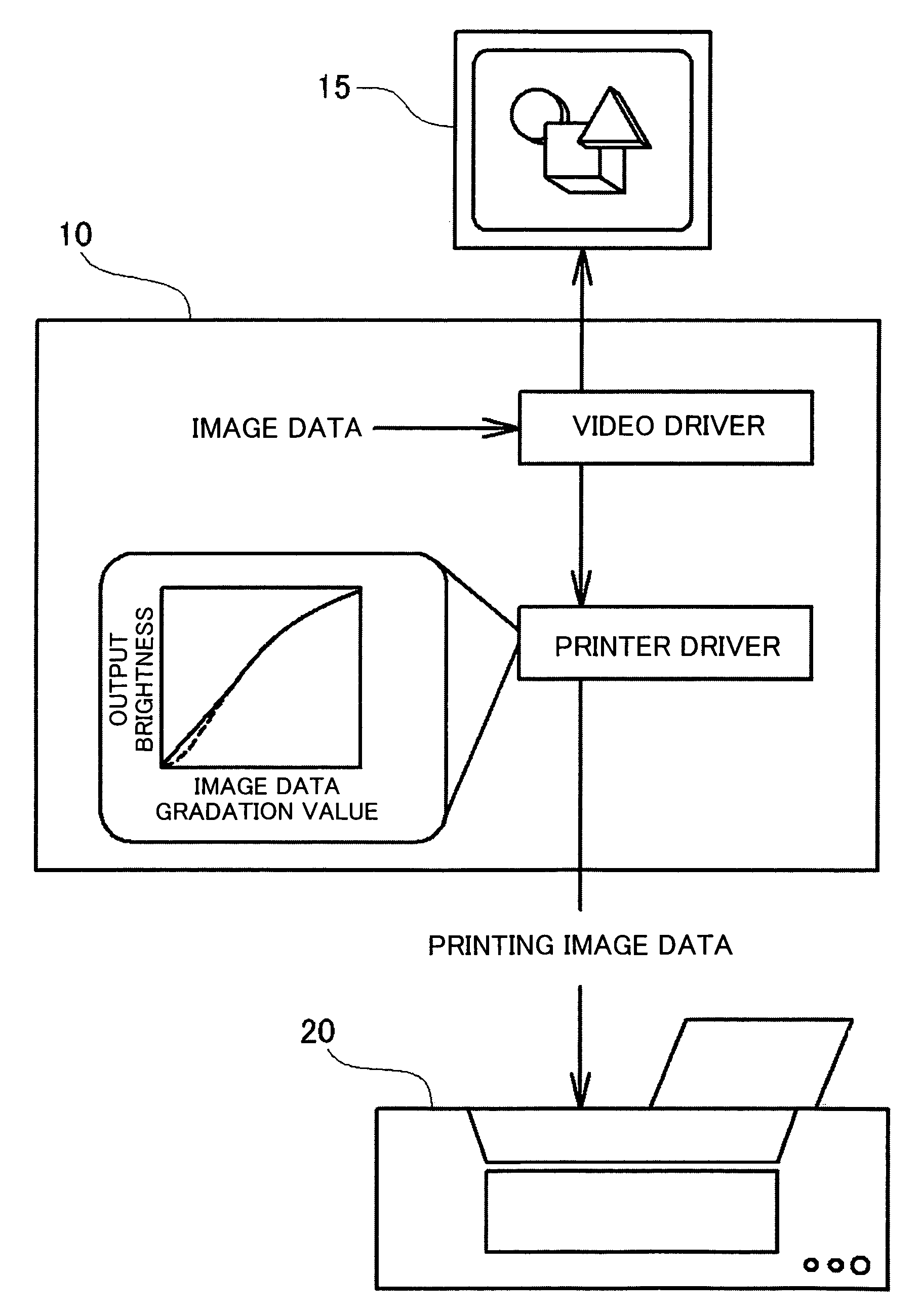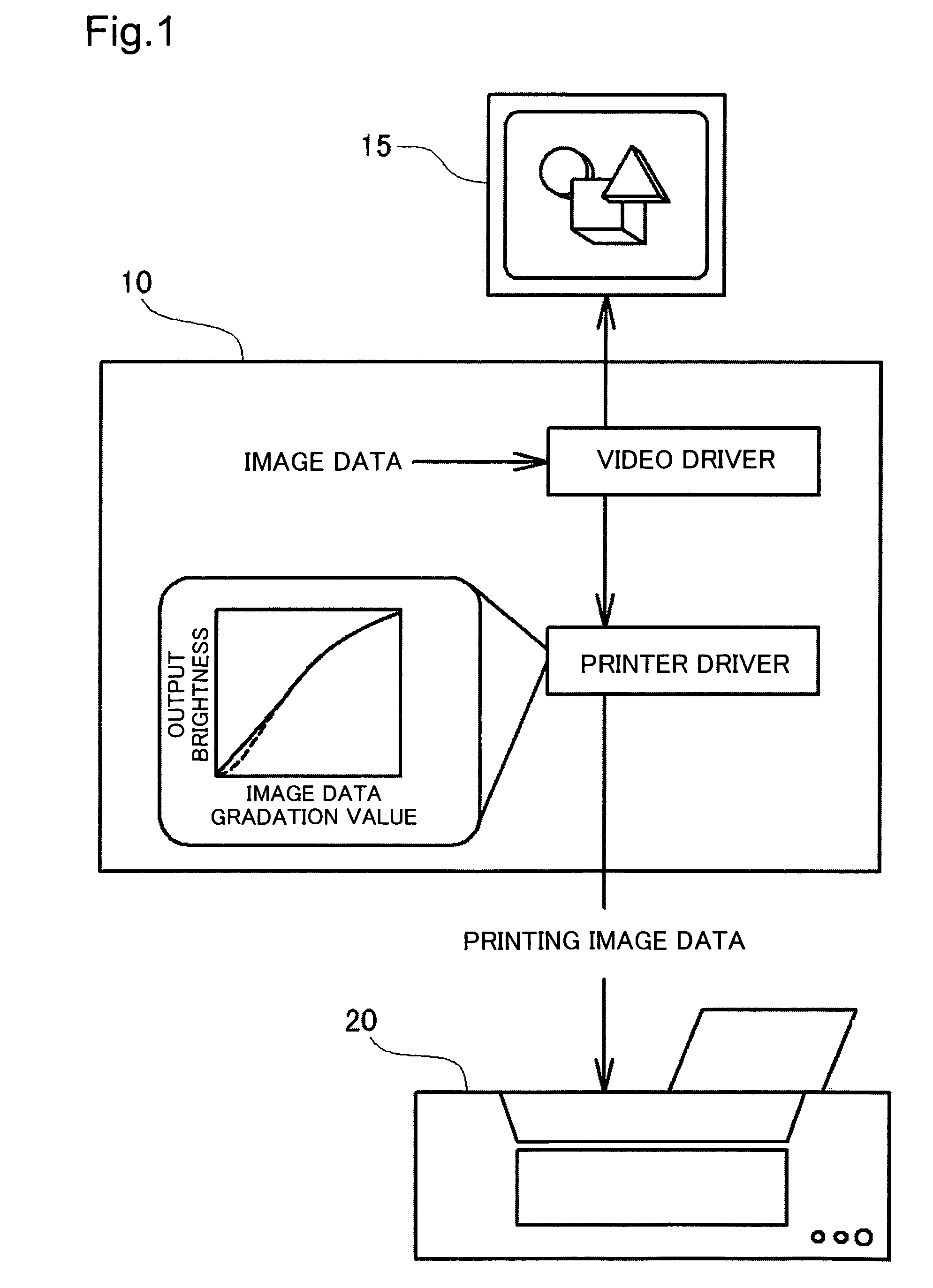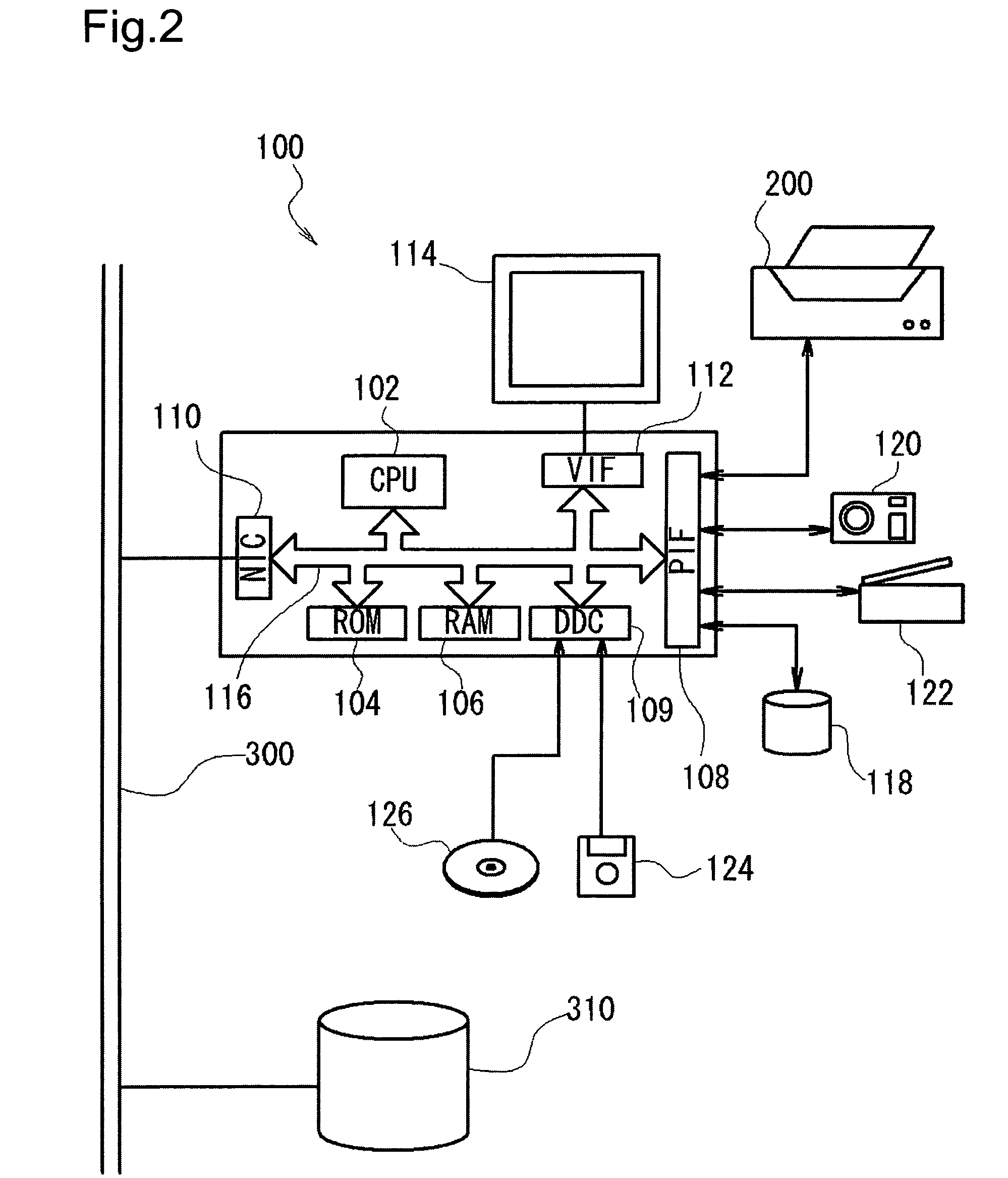Printing device for printing images with ink and printing method for the same
a printing device and image technology, applied in the field of printing images, can solve the problems of lack of contrast and sharpness of images, inability to print images that give a different impression, and the dynamic range of bright spots that can be output by the monitor screen does not necessarily have the breadth of the range of gradations that can be used by image data
- Summary
- Abstract
- Description
- Claims
- Application Information
AI Technical Summary
Benefits of technology
Problems solved by technology
Method used
Image
Examples
first embodiment
D. Display Image Printing Process of the
[0091]Next, described is the display image printing process performed to print the image displayed on the monitor 114 from the color printer 200.
[0092]FIG. 9 is a flow chart that shows the flow of the display image printing process of the first embodiment. This process is a process executed by the CPU 102 incorporated in the computer 100. Following, it is described according to the flow chart.
[0093]When the display image printing process of the first embodiment is started, first, the image data to be printed is read (step S200). The image data read at this time is image data for which contrast adjustment performed with the image display process described above has not been performed, in other words, image data created with a digital camera or various types of application programs left unchanged. Also, the read image data, the same as the image data supplied to the monitor 114, is so-called RGB image data described previously with the gradation...
second embodiment
E. Display Image Printing Process of the
[0117]With the display image printing process of the first embodiment described above, for the display image data, specifically, the image data for which the contrast is adjusted in the same way as the image displayed on the monitor 114, the gradation value is converted according to the gradation characteristics correction curve shown in FIG. 12, and color conversion processing was performed on the obtained printing image data. However, by setting suitable gradation values in advance in the color conversion table LUT referenced with the color conversion process, it is possible to implement the process of correcting the gradation characteristics and the color conversion process with a single process. Following, this kind of display image printing process of the second embodiment is described.
[0118]FIG. 17 is a flow chart showing the flow of the display image printing process of the second embodiment. The same as with the display image printing ...
PUM
| Property | Measurement | Unit |
|---|---|---|
| brightness | aaaaa | aaaaa |
| colors | aaaaa | aaaaa |
| colorimetric | aaaaa | aaaaa |
Abstract
Description
Claims
Application Information
 Login to View More
Login to View More - R&D
- Intellectual Property
- Life Sciences
- Materials
- Tech Scout
- Unparalleled Data Quality
- Higher Quality Content
- 60% Fewer Hallucinations
Browse by: Latest US Patents, China's latest patents, Technical Efficacy Thesaurus, Application Domain, Technology Topic, Popular Technical Reports.
© 2025 PatSnap. All rights reserved.Legal|Privacy policy|Modern Slavery Act Transparency Statement|Sitemap|About US| Contact US: help@patsnap.com



